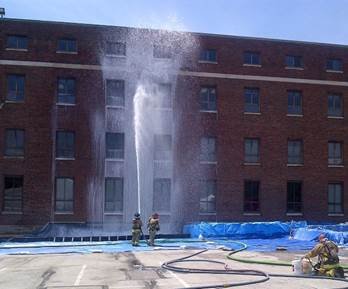Radiological Recovery Logistics Tool
Find municipal and commercial equipment to recover from an urban radiological release event

Cleanup resources will be extremely stretched after a large-scale radiological incident, such as the detonation of an improvised nuclear device, a release of a radiological dispersal device, or a nuclear power plant accident. Local, state, federal, and Tribal agencies performing response and recovery efforts may need to find innovative approaches for their response and recovery efforts. The Radiological Recovery Logistics Tool (RRLT) helps responders locate and use municipal and commercial equipment to compress the recovery timeline and support specific goals associated with radiological response and remediation, including reducing the radiation dose burden to response personnel. The purpose of the RRLT is to increase the resilience of urban communities by expediting response and recovery operations.
Tool Download
The RRLT is a downloadable computer application that organizes information on equipment and assets that may be used to recover from a wide area release of radioactivity into the urban environment. Argonne National Laboratory, the Department of Homeland Security, the Federal Emergency Management Agency, and the Environmental Protection Agency developed this tool to assist response agencies.
| Date | File for Download |
|---|---|
| 3/16/23 | Radiological Recovery Logistics Tool_1.0 for Windows (exe) |
| 3/16/23 | RRLT User Guide (pdf) |
Applications
The tool contains a database of common and specialty equipment available at local public works departments or commercial vendors that can be used to recover from an urban radiological release event. The database includes detailed information on the equipment's everyday function, its effectiveness on different surfaces and forms of radioactive contaminants, the scale for which the equipment may be applied, the the skill required of the operator, utility requirements, legal and environmental considerations, regional and local availability, waste generated, and cost. Other factors the tool considers include prior uses in radiological environments, safety measures, and best practice guidance to ensure its effective use.
Ultimately, a component of the tool’s software called the “equipment recommendation wizard” uses artificial intelligence (AI) to create an output that lists and recommends equipment that could be used to help plan recovery operations. The RRLT helps the user understand what types of equipment might be available to accomplish general and specific recovery mission activities based on environmental and operational constraints.
Potential uses of the RRLT include tabletop exercises, pre-incident resource planning, and by the Planning Section of an Incident Command Structure post-incident.
While geared towards radiological incidents, the RRLT could be adapted for biological and chemical incidents.
Additional Resources
Watch the U.S. EPA Research Webinar: Readily Available Equipment for Response & Recovery
Technical Contact
Have questions or need assistance using RRLT? Contact Dr. Matthew Magnuson (magnuson.matthew@epa.gov)
This software/application has been approved for release by the U.S. Environmental Protection Agency (USEPA). Although the software has been subjected to rigorous review, the USEPA reserves the right to update the software as needed pursuant to further analysis and review. No warranty, expressed or implied, is made by the USEPA or the U.S. Government as to the functionality of the software and related material nor shall the fact of release constitute any such warranty. Furthermore, the software is released on condition that neither the USEPA nor the U.S. Government shall be held liable for any damages resulting from its authorized or unauthorized use.
